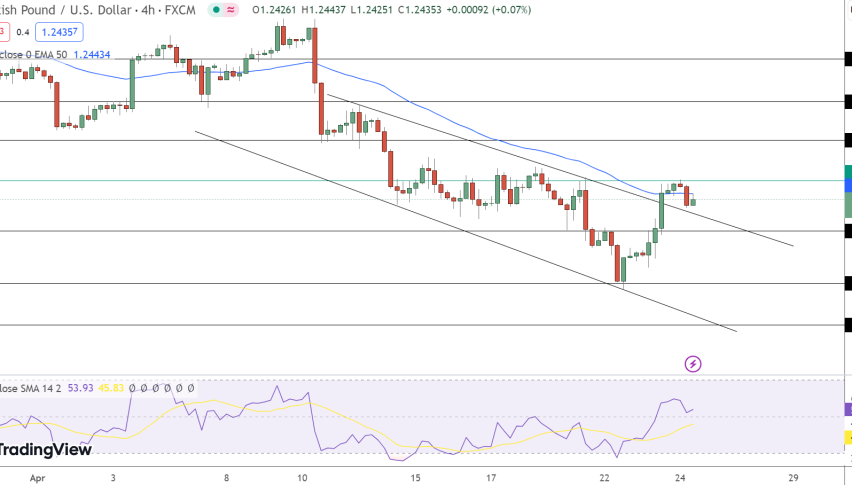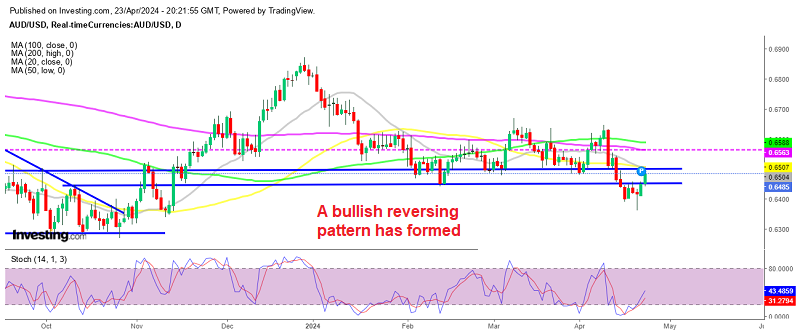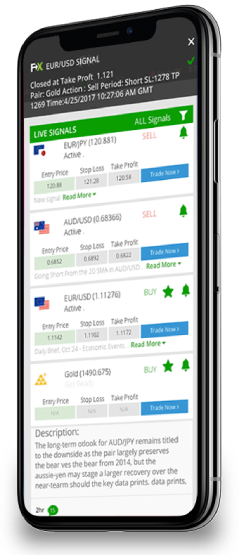
Weekly Outlook, May 3-7, 2021: Top Economic Events to Watch This Week
The broad-based U.S. dollar will end this week on the bullish track amid expectations concerning U.S. President Joe Biden’s stimulus package, which helped the U.S. Treasury yields to draw bids. Apart from this, the upticks in the buck were further bolstered by the previously released upbeat U.S. data, which showed that the world’s biggest economy is getting closer to recovery from the pandemic. Meanwhile, the bullish bias in the dollar could be tied to the market’s downbeat mood, which tends to underpin the safe-haven U.S. dollar demand. Alternatively, the upticks in the dollar could be short-lived or temporary as the Federal Reserve stuck to its message of ultra-low interest rates for longer.
Looking forward to the coming week, the series of Manufacturing PMI and Unemployment rates, along with the RBA Rate Statement and BOE Monetary Policy Report, can drive plenty of headlines to keep the markets on the move. Apart from this, the US-China trade headlines, America-Russia tussle, and coronavirus headlines will also closely follow to play a key role in determining risk levels in the market.
Top Economic Events to Watch This Week
1. US ISM Manufacturing PMI – Monday, 15:00 GMT:
This data typically released by Institute for Supply Management (ISM) Manufacturing Index, which shows business conditions in the U.S. manufacturing sector. It is one of the leading indicators of the overall economic situation in the United States. A result above 50 would be positive (or bullish) for the greenback; conversely, a result below 50 is seen as bearish for the currency.
Previous release
ACTUAL:64.7
DEV:1.59
CONS:61.3
DATE:04/01/2021 14:00
2. RBA Interest Rate Decision:– Tuesday, 5:30 GMT
The Reserve Bank typically makes this decision in Australia. If the RBA is hawkish about the inflationary outlook of the economy and increases the interest rates, it is seen as bullish for the AUD currency. Conversely, suppose the RBA has a dovish view about the inflationary outlook of the economy and keeps the constant interest rate or cuts the interest rate. In that case, it is seen as bearish for the AUD currency.
Previous release
ACTUAL:0.1 %
DEV:0.00
CONS:0.1 %
DATE:04/06/2021 04:30
RBA Rate Statement – The decisions about the interest rate are made by the Reserve Bank Board and are explained in a media release, which announces the decision at 2.30 pm after each Board meeting. It is understood as a basic tool the Board uses to communicate with investors regarding monetary policy. It contains the result of their decision on interest rates and commentary about the economic conditions that influenced their decision. Apart from this, it discusses the economic outlook and gives fresh clues on the outcome of future decisions.
3. NZD – Unemployment Rate – Tuesday, 23:45 GMT
This data is typically released by Statistics New Zealand, which measures any change in the number of employed people in New Zealand. In simple words, the increase in this indicator positively impacts consumer spending, which tends to boost economic growth. Hence, high figures are considered bullish for the N.Z. dollar currency; conversely, low figures are seen as negative (or bearish) for the N.Z. dollar currency.
Previous release
ACTUAL:0.6 %
DEV:0.82
CONS:0 %
DATE:02/02/2021 21:45
Unemployment Rate – This data is typically released by Statistics New Zealand, which measures the number of unemployed workers divided by the total civilian labor force. It is one of the key indicators for the New Zealand economy. The number of unemployed people is an important sign of overall economic health because consumer spending is highly correlated with labor-market conditions. If the rate goes upward, it shows a lack of expansion within the New Zealand labor market. As a result, a rise in the unemployment rate leads to weakness in the NZ economy. However, a low figure is seen as bullish for the NZD; conversely, the rise is seen as negative or bearish for the NZD currency.
Previous release
ACTUAL:4.9 %
DEV:-1.00
CONS:5.6 %
DATE:02/02/2021 21:45
4. US ISM Manufacturing PMI – Wednesday, 15:00 GMT:
ISM Manufacturing PMI – This data typically released by Institute for Supply Management (ISM) Manufacturing Index, which shows business conditions in the U.S. manufacturing sector. It is one of the leading indicators of the overall economic condition in the United States. The result above 50 would be positive (or bullish) for the greenback. Conversely, the result below 50 is seen as bearish for the currency.
Previous release
ACTUAL:63.7
DEV:2.44
CONS:58.5
DATE:04/05/2021 14:00
5. Crude Oil Inventories – Wednesday, 15:30 GMT
This data is released by the Energy Information Administration (EIA), a U.S. key indicator and mainly affects the Canadian dollar due to Canada’s sizable energy sector. It measures supply and demand imbalances in the market, leading to changes in production levels and price volatility. ‘Actual’ less than ‘Forecast’ is seen as bullish for USD currency.
Previous release
ACTUAL:0.09 M
DEV:-0.23
CONS:0.659 M
DATE:04/28/2021 14:30
6. Bank of England Monetary Policy Report – Thursday, 12:00 GMT
The Bank of England typically releases this report after every quarter. It’s the complete economic analysis and inflation projections on which the Bank’s Monetary Policy Committee bases its interest rate decisions and presents an assessment of the possibilities for U.K. inflation over the following two years. Hence, high figures are seen as positive or bullish for the GBP currency. Conversely, a low figure is seen as negative for the GBP currency.
BoE Interest Rate Decision:
The Bank of England typically announces this decision. However, if the BoE is hawkish about the U.K. economic outlook and raises the interest rates, it would be considered positive or bullish for the GBP currency. Conversely, if the BoE has a dovish stance on the U.K. economy and keeps the constant interest rate or cuts the interest rate, it would be understood as negative or bearish for the GBP currency.
Previous release
ACTUAL:0.1 %
DEV:0.00
CONS:0.1 %
DATE:03/18/2021 12:00
7. Canadian Employment Rate – Friday, 13:30 GMT
Statistics Canada typically releases this data, which measures the number of employed people in Canada. In simple words, the increase in this indicator positively impacts consumer spending, which tends to boost economic growth. Hence, high figures are considered bullish for the CAD currency; conversely, low figures are seen as negative (or bearish) for the CAD currency.
Previous release
ACTUAL:303.1 K
DEV:1.79
CONS:100 K
DATE:04/09/2021 12:30
Unemployment Rate:
Statistics Canada typically releases this data, which measures the number of unemployed workers divided by the total civilian labor force. It is one of the critical indicators for the Canadian economy. The number of unemployed people is an important sign of overall economic health because consumer spending is highly correlated with labor-market conditions. If the rate goes upward, it shows a lack of expansion within the Canadian labor market. As a result, a rise in the unemployment rate leads to weakness in the Canadian economy. However, a low figure is seen as bullish for the CAD; conversely, the rise is seen as negative or bearish for the CAD currency.
Previous release
ACTUAL:7.5 %
DEV:-0.98
CONS:8 %
DATE:04/09/2021 12:30












